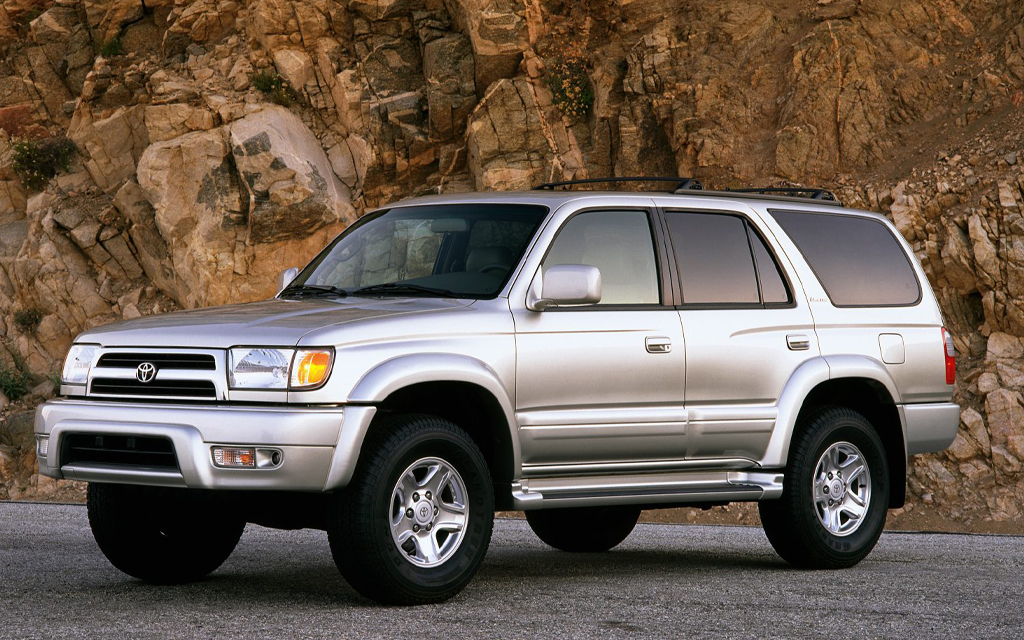The Toyota 4Runner 3rd Generation: A Comprehensive Guide To Oil Leaks
The Toyota 4Runner 3rd Generation: A Comprehensive Guide to Oil Leaks
Related Articles: The Toyota 4Runner 3rd Generation: A Comprehensive Guide to Oil Leaks
Introduction
With enthusiasm, let’s navigate through the intriguing topic related to The Toyota 4Runner 3rd Generation: A Comprehensive Guide to Oil Leaks. Let’s weave interesting information and offer fresh perspectives to the readers.
Table of Content
The Toyota 4Runner 3rd Generation: A Comprehensive Guide to Oil Leaks

The Toyota 4Runner 3rd generation, produced from 1996 to 2002, is renowned for its durability and off-road capabilities. However, like any vehicle, it can experience issues, one of which is oil leaks. Understanding the causes, symptoms, and solutions to oil leaks in this model is crucial for maintaining its longevity and ensuring safe and reliable operation.
Understanding the Importance of Addressing Oil Leaks
Oil leaks in the Toyota 4Runner 3rd generation, while seemingly minor, can have significant consequences.
- Engine Damage: A consistent loss of engine oil can lead to reduced lubrication, resulting in friction between moving parts, ultimately causing engine damage.
- Safety Hazards: A severe oil leak can lead to a fire hazard, particularly if the leaking oil comes into contact with hot engine components.
- Environmental Concerns: Oil leaks contribute to environmental pollution, contaminating soil and water sources.
- Reduced Performance: Oil leaks can lead to reduced engine performance, affecting acceleration and fuel efficiency.
Common Causes of Oil Leaks in the 4Runner 3rd Generation
Several factors can contribute to oil leaks in the Toyota 4Runner 3rd generation:
- Valve Cover Gaskets: These gaskets seal the valve cover, preventing oil from escaping. Over time, they can harden, crack, or become brittle, leading to leaks.
- Oil Pan Gasket: The oil pan gasket seals the bottom of the engine, preventing oil from draining. Similar to the valve cover gasket, it can deteriorate with age and wear, causing leaks.
- Crankshaft Seal: This seal prevents oil from escaping the crankshaft, a rotating component within the engine. Worn or damaged crankshaft seals are a common cause of oil leaks.
- Oil Filter Housing: A faulty oil filter housing gasket can lead to oil leaks around the filter.
- Engine Block Cracks: In rare cases, cracks in the engine block can allow oil to leak. This is often caused by excessive heat, overheating, or damage.
- Loose or Damaged Bolts: Bolts securing components like the valve cover or oil pan can become loose or damaged, leading to leaks.
Identifying Oil Leaks: Recognizing the Symptoms
Identifying an oil leak early is crucial for preventing further damage. Here are some telltale signs:
- Visible Oil Drips: Look for oil stains on the ground beneath your vehicle, particularly after parking.
- Oil Smell: A strong oil smell emanating from the engine bay is a clear indicator of a leak.
- Oil Level Dip: Regularly check your oil dipstick. A significant drop in oil level over a short period suggests a leak.
- Smoke from the Engine: If oil is leaking onto hot engine components, it can burn off, creating a visible smoke plume.
- Dashboard Warning Light: Some vehicles have a warning light that illuminates when a low oil level is detected.
Addressing Oil Leaks: A Step-by-Step Approach
Addressing oil leaks requires a systematic approach:
- Identify the Source: Carefully inspect the engine bay, paying close attention to potential leak points like the valve cover, oil pan, and crankshaft seal.
- Clean the Engine: Thoroughly clean the engine to remove any existing oil residue, allowing you to clearly identify the leak source.
- Replace Gaskets: Once the leak source is identified, replace the damaged gasket(s). Ensure the new gaskets are compatible with the engine and installed correctly.
- Tighten Bolts: Check and tighten any loose bolts securing components like the valve cover or oil pan.
- Inspect Crankshaft Seal: If the crankshaft seal is suspected, it may need replacement.
- Address Engine Block Cracks: If a crack in the engine block is suspected, professional repair is necessary.
Tips for Preventing Oil Leaks
- Regular Oil Changes: Adhering to the recommended oil change intervals ensures fresh oil, reducing the chances of leaks.
- Use High-Quality Oil: Using high-quality oil that meets the manufacturer’s specifications reduces the risk of oil breakdown and leaks.
- Avoid Overheating: Overheating can stress engine components, increasing the likelihood of leaks.
- Regular Inspections: Regularly inspect the engine bay for signs of oil leaks.
- Professional Maintenance: Schedule regular professional maintenance to address potential issues before they become major problems.
Frequently Asked Questions
Q: How often should I check for oil leaks?
A: It’s recommended to check your engine bay for oil leaks at least once a month, or more frequently if you notice any unusual symptoms.
Q: Can I temporarily fix an oil leak myself?
A: While temporary solutions like using a sealant might seem appealing, they are not recommended. These solutions can mask the problem, potentially leading to further damage.
Q: What is the cost of fixing an oil leak?
A: The cost of fixing an oil leak varies depending on the severity of the leak and the required repairs. Replacing gaskets and seals can range from a few hundred to several thousand dollars, depending on the specific components involved.
Conclusion
Oil leaks in the Toyota 4Runner 3rd generation, while common, can be addressed with prompt action. By understanding the causes, symptoms, and solutions, you can maintain your vehicle’s reliability and safety, ensuring a long and enjoyable ownership experience. Regular maintenance, prompt attention to any signs of leaks, and professional repairs are key to preventing major issues and preserving the legacy of this rugged and capable SUV.








Closure
Thus, we hope this article has provided valuable insights into The Toyota 4Runner 3rd Generation: A Comprehensive Guide to Oil Leaks. We thank you for taking the time to read this article. See you in our next article!
You may also like
Recent Posts
- The 2025 Toyota 4Runner: A Legacy Reimagined
- The Enduring Appeal Of The Toyota 4Runner Manual Transmission 4×4
- The Toyota 4Runner TRD Off-Road: A Legacy Of Adventure, Reimagined For 2025
- The Anticipation Builds: Unveiling The Next Generation Toyota 4Runner
- The 2025 Toyota 4Runner TRD: A Legacy Of Adventure Reimagined
- The Future Of Color: Exploring The Significance Of Color Trends
- The Toyota 4Runner: A Legacy Of Capability, Now With Expanded Seating
- The Toyota 4Runner Timing Belt: A Vital Component For Engine Longevity
Leave a Reply